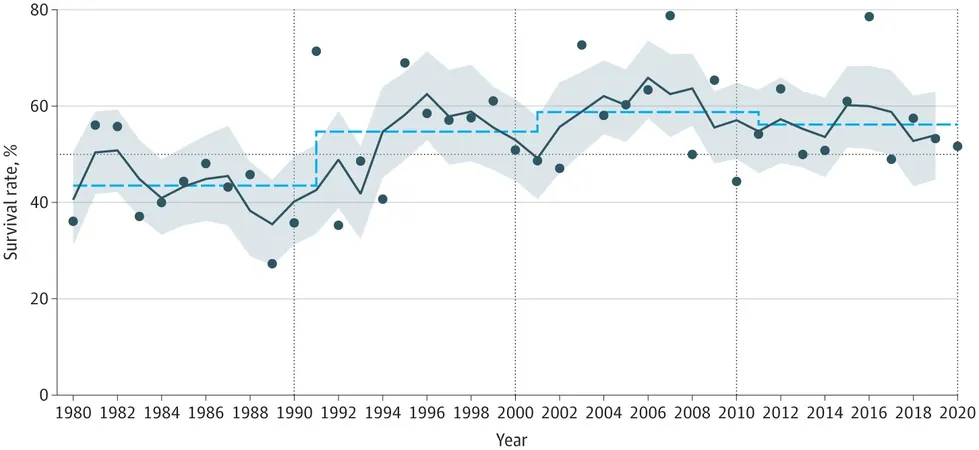
Avalanche Survival Rates Surge: How New Technology and Training Are Changing Lives
2024-09-26
Author: Li
Overview
A groundbreaking analysis reveals that the survival rate for those buried in avalanches has dramatically increased by 10% since 1994, according to a study published in the JAMA Network Open. Modern avalanche transceivers, along with advancements in shovels and probes, have become essential tools for ski tourers. The combination of these technologies, an increase in avalanche safety courses, and the efficiency of rescue teams has significantly improved the detection and rescue of buried victims.
Statistics on Survival Rates
Simon Rauch, the lead author and an emergency physician at Eurac Research, states, 'In 1990, only 43.5% of buried victims survived. Today, that number has risen to an impressive 53.5%.' The study analyzed data spanning from 1981 to 2020, comparing it with a comprehensive study conducted in 1994.
Long-Term Burials
Additionally, the study highlights a remarkable increase in the survival probability for long-term burials—those exceeding 130 minutes—rising from a mere 2.6% to 7.3%. Rescue times have seen significant improvements as well, dropping from an average of 45 minutes to just 25 minutes. When companions are present during an avalanche incident, the average rescue time has been cut from 15 minutes to 10 minutes. Furthermore, organized rescue efforts have improved from 153 minutes to an astonishing 90 minutes.
Critical Survival Window
However, not all statistics are encouraging. The critical window in which survival rates exceed 90% has shrunk from 18 minutes in the earlier study to just 10 minutes today. Hermann Brugger, co-author of the current study and author of the original 1994 research, suggests this decline underscores the need to adapt mountain rescue protocols to the evolving landscape of avalanche survival.
Impact of Climate Change
One hypothesis for this reduced survival time window is the changing snow density due to climate change. Rauch suggests that increased density makes it more challenging for victims to breathe once buried, but this theory requires further data to validate.
Importance of Time in Rescues
'Time is the critical factor here,' Rauch emphasizes. 'Those caught in an avalanche have three times higher survival chances if their companions can aid in the rescue compared to waiting for organized teams. Every second counts.'
Proactive Measures
The study not only reviews past trends but also stresses proactive measures. Avalanche warning services, ski tourer training, enhanced rescue techniques, and improvements in emergency medical care have all played vital roles in reducing avalanche mortality rates in recent decades.
Conclusion
As skiing popularity continues to rise, understanding these changes in survival rates has never been more critical. Equipped with advanced technology and training, skiers can significantly improve their chances of survival in the event of an avalanche—making this an essential read for all winter sports enthusiasts.


 Brasil (PT)
Brasil (PT)
 Canada (EN)
Canada (EN)
 Chile (ES)
Chile (ES)
 Česko (CS)
Česko (CS)
 대한민국 (KO)
대한민국 (KO)
 España (ES)
España (ES)
 France (FR)
France (FR)
 Hong Kong (EN)
Hong Kong (EN)
 Italia (IT)
Italia (IT)
 日本 (JA)
日本 (JA)
 Magyarország (HU)
Magyarország (HU)
 Norge (NO)
Norge (NO)
 Polska (PL)
Polska (PL)
 Schweiz (DE)
Schweiz (DE)
 Singapore (EN)
Singapore (EN)
 Sverige (SV)
Sverige (SV)
 Suomi (FI)
Suomi (FI)
 Türkiye (TR)
Türkiye (TR)
 الإمارات العربية المتحدة (AR)
الإمارات العربية المتحدة (AR)